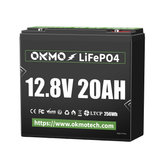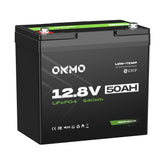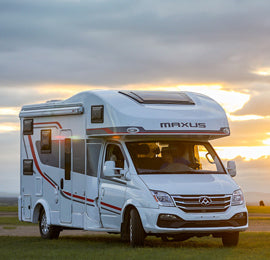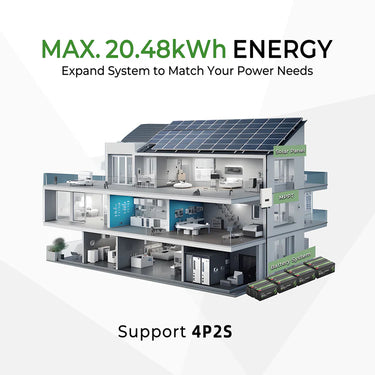Can you use a marine battery in a car?
 Core Conclusion: It is technically feasible, but this is not a simple "drop-in" replacement. It has specific requirements for the car's electrical system. If done incorrectly, there is a risk of damaging both the battery and the vehicle.
Core Conclusion: It is technically feasible, but this is not a simple "drop-in" replacement. It has specific requirements for the car's electrical system. If done incorrectly, there is a risk of damaging both the battery and the vehicle.
Below is a detailed analysis from the perspectives of LiFePO4 battery characteristics and automotive electrical system requirements.
Part 1: Why is it "Feasible"? The Advantages of LiFePO4 Batteries
Compared to traditional lead-acid batteries, LiFePO4 batteries with a built-in BMS offer significant advantages:
-
Exceptional Performance:
-
High Power Density: Can provide cranking current (CCA) far exceeding that of lead-acid batteries, ensuring quick and powerful starts, especially in cold weather.
-
Long Cycle Life: Cycle life is typically 5-10 times that of lead-acid batteries, often reaching 2000+ cycles.
-
Light Weight: For equivalent capacity, they weigh only 1/3 or 1/4 of a lead-acid battery, aiding in reducing fuel/electricity consumption.
-
High Safety: The LiFePO4 chemistry is thermally stable and less prone to thermal runaway, making it safer than NMC lithium batteries.
-
-
The Critical Role of the BMS (Battery Management System):
-
Charge/Discharge Protection: The BMS continuously monitors battery voltage, current, and temperature. In the event of overcharge, over-discharge, short circuit, or overload, the BMS will actively cut off the circuit to protect the battery from damage. This is the foundation of safe use.
-
Cell Balancing: Ensures the voltage remains consistent across all cells within the battery pack, preventing the "bottleneck effect" in individual cells, thereby extending the overall battery life.
-
Status Communication: Advanced BMS units provide communication interfaces (e.g., CAN bus) to report data such as SOC (State of Charge) and state of health.
-
 Part 2: Why is it Not "Plug-and-Play"? Challenges and Electrical System Requirements
Part 2: Why is it Not "Plug-and-Play"? Challenges and Electrical System Requirements
Despite the advantages above, a car's electrical system is designed for lead-acid batteries. Directly swapping in a LiFePO4 battery presents several key challenges.
The Core Challenge: Charging Voltage Mismatch
-
Lead-Acid Batteries: A car's alternator regulator is typically set to a voltage range of 13.8V - 14.4V. This range is designed for the float and equalization charging of lead-acid batteries.
-
LiFePO4 Batteries: A fully charged LiFePO4 battery has a voltage of about 14.6V (for a 4S configuration), but its ideal float voltage is around 13.6V. If subjected to a continuous 14.4V high float voltage, even if the BMS prevents overcharge by disconnecting, it can lead to:
-
Frequent BMS Disconnection: During long highway drives, the alternator continuously outputs ~14.4V. The BMS will cut off charging once the battery is full. This causes the vehicle's electrical system to instantly lose its load, potentially creating voltage spikes that can damage sensitive onboard electronics (e.g., ECU, audio system).
-
Failure to Fully Charge: Some BMS units have lower protection thresholds and may not complete the constant current charging phase under 14.4V, preventing the battery from ever reaching a 100% charge.
-
Alternator Stress: The frequent switching of the load also puts stress on the alternator's regulator and rectifier.
-
Therefore, the requirements for the car's electrical system are as follows:
-
Alternator Compatibility (Most Critical)
-
Ideal Scenario: The vehicle's alternator has a relatively "gentle" regulated voltage, in the range of 13.9V - 14.2V. Within this range, most LiFePO4 batteries can operate, but may not reach a full 100% charge.
-
Recommended Solution: If the alternator output is consistently 14.4V or higher, it is highly recommended to install a Battery Isolator / DC-DC Charger.
-
Function: This device is installed between the alternator and the starter battery. It takes the high voltage output from the alternator and converts it into a proper charging profile (including bulk, absorption, and float stages) suitable for the LiFePO4 battery, perfectly protecting the battery and ensuring it is fully charged. This is the safest and most professional solution.
-
-
-
Compatibility with Vehicle Electronics
-
Modern car ECUs, sensors, and lights typically have a wide operating voltage range (often 9V-16V), so using a LiFePO4 battery is generally not a problem.
-
However, voltage fluctuations can occur when the BMS suddenly disconnects the charging circuit for protection. A high-quality DC-DC charger can smooth out these fluctuations and protect the vehicle's electronics.
-
-
Low-Temperature Charging Consideration
-
LiFePO4 batteries cannot be effectively charged below 0°C (32°F). Charging them at freezing temperatures can cause lithium plating, leading to permanent damage.
-
Requirement: Advanced BMS units or external DC-DC chargers come with a temperature sensor. When the battery temperature is detected to be at or below freezing, they will automatically disable charging. This is an essential feature for cold climates.
-
-
Physical Installation and Safety
-
Mounting: LiFePO4 batteries are lighter and must be securely fastened to prevent movement while driving.
-
Dimensions: Ensure the battery dimensions fit the original location.
-
Fusing: A correctly sized fuse must be installed on the positive terminal, close to the battery, as a final safety measure.
-
 Summary and Actionable Advice
Summary and Actionable Advice
Feasibility Assessment:
-
Simple Drop-in Replacement (Not Recommended, Risky): Only suitable for older vehicles with simple electrical systems and lower alternator output voltage (e.g., below 14.2V), and only for short-term use as a starter battery. Long-term use still carries risks.
-
Professional Retrofit (Highly Recommended): For the vast majority of modern vehicles, the correct approach is a combination of: "LiFePO4 Battery + a Dedicated DC-DC Charger".
Recommended Steps:
-
Measure Vehicle Voltage: Use a multimeter to measure the voltage across the original lead-acid battery with the engine running. If the voltage is consistently above 14.4V, a DC-DC charger is mandatory.
-
Select a Suitable Battery: Purchase an automotive starting LiFePO4 battery with a built-in BMS, ensuring its CCA rating meets or exceeds the vehicle's requirements.
-
Install a DC-DC Charger: This is the key to success. Choose a reputable model with an output current that matches your battery's capacity (e.g., a 30A-50A model).
-
Professional Installation: It is recommended to have the installation performed by a professional automotive electrician to ensure correct and secure wiring, along with proper fuse installation.
Using a marine LiFePO4 battery with a built-in BMS as a car starter battery is a high-performance, long-life upgrade option, but it is not a thoughtless replacement. The core prerequisite is resolving the mismatch between the car's alternator and the lithium battery's charging characteristics. By adding a DC-DC charger, you can safely and efficiently enjoy all the benefits of lithium technology while completely avoiding potential damage to your vehicle's electrical system and the battery itself.









